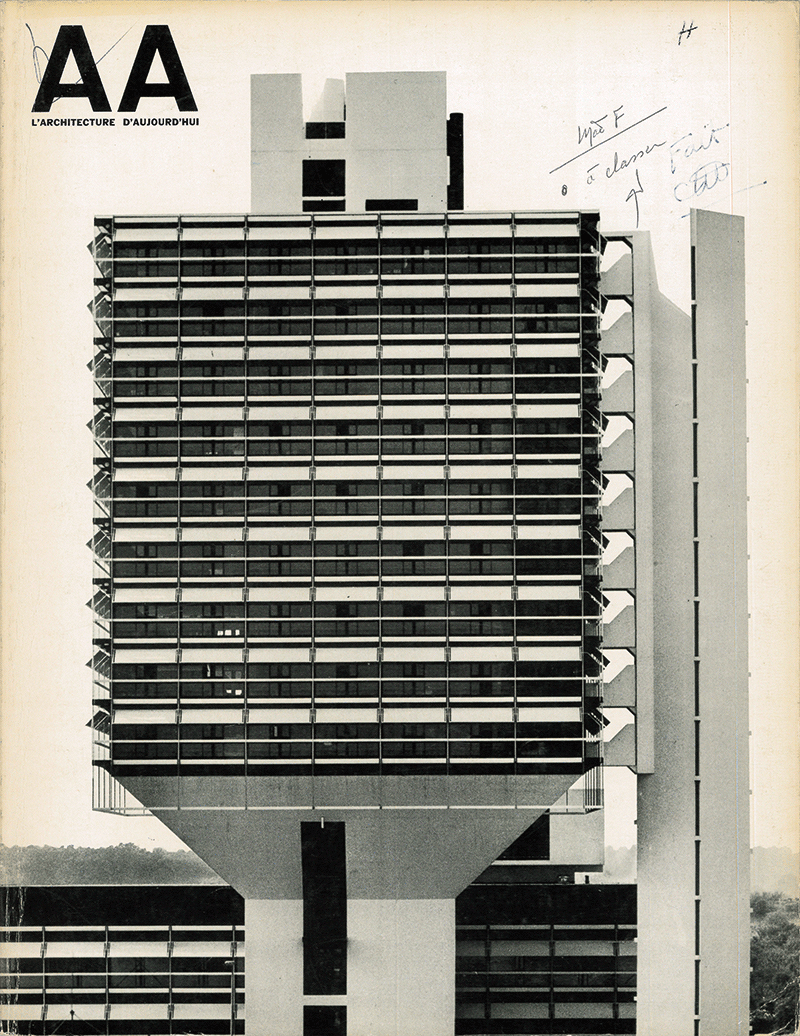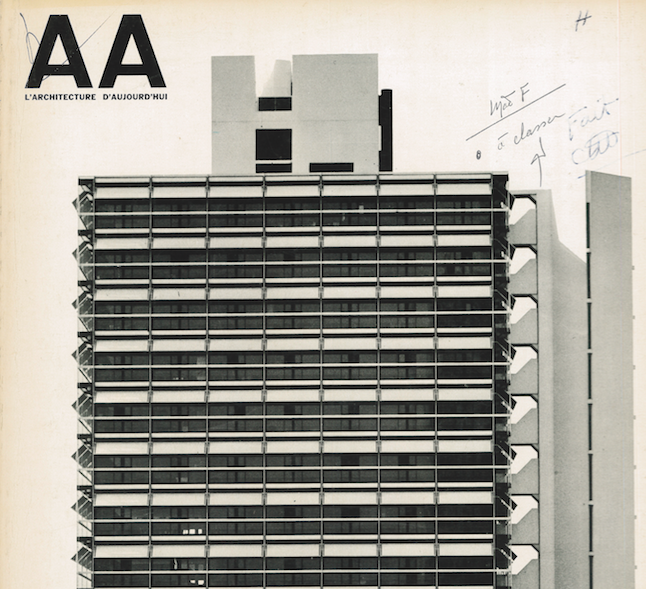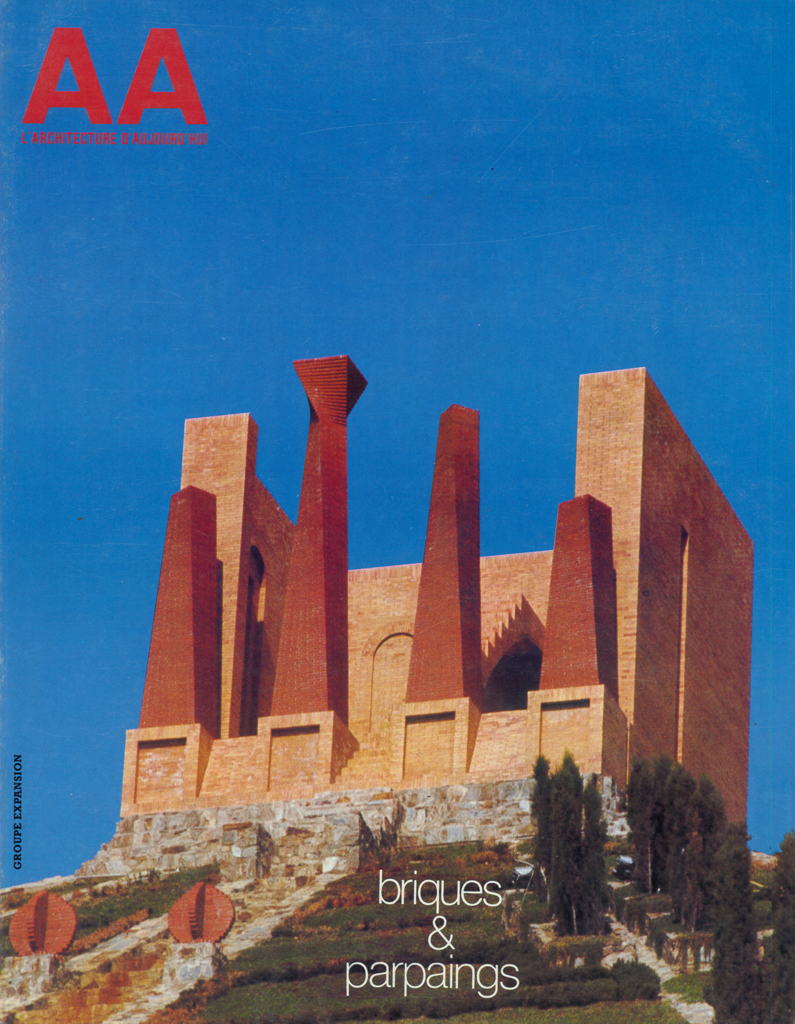AA’s covers: issue 165, December 1972
This article by Jean-Philippe Hugron is an extract from AA Nr 428 – Private commissions, public intentions – published in December 1972.
Issue 165 still raises many questions, almost 50 years after it was published. Its particularly graphic cover in black and white illustrates the Olivetti building located in a business district near Frankfurt, Germany. Designed by Egon Eiermann, the building still boasts the same spectacular attributes today … but how long will this last? The German financial centre is doing away with these buildings of another era. Bulldozers are happily chipping away at the best examples of tertiary architecture without the slightest protest. Designed by Wilhelm Simon, the Deutsche Bank building, Große Gallusstraße 10, while obsolete, may have been rejuvenated with a few clever adjustments that respected its dark and elegant façades. Land pressure, a taste for innovation and above all the tyranny of image have decided otherwise, dictating projects that could only be made possible, allegedly, through demolition. The tertiary city is therefore a city without strata that is built up and then torn down. It is a city that is short-term, in which architecture is consumed and then, once devalued, pitifully discarded. At a time when environmental concerns are calling for re-use, this shameful attitude comes together with a collective form of amnesia. This issue calls to memory the buildings destroyed – the offices designed by Laurens Bisscheroux in Heerlen (the Netherlands) – and others, protected (hallelujah), such as the IBM headquarters in Cosham (United Kingdom) where Foster Associates prefigured, a good forty years ahead, the Louvre-Lens. In short, so many projects to rehabilitate tertiary architecture.
The whole version of AA Nr. 428 is available on our online store.




